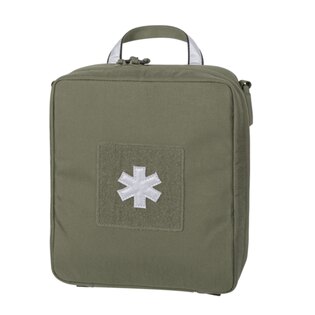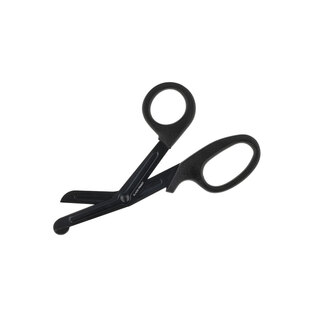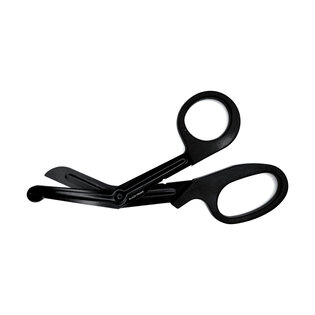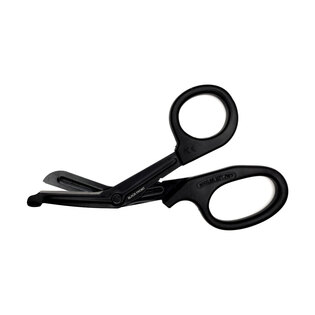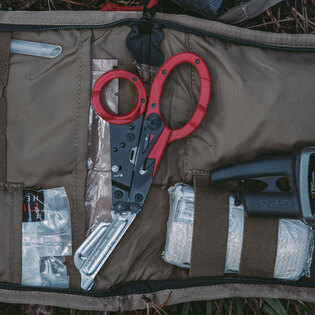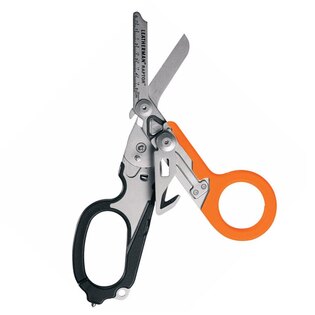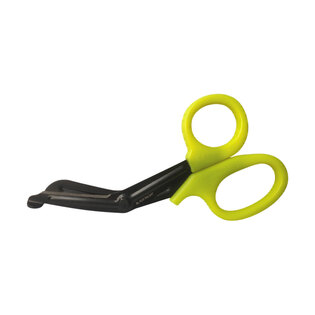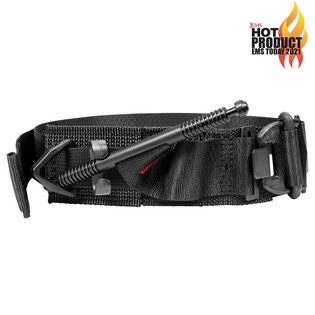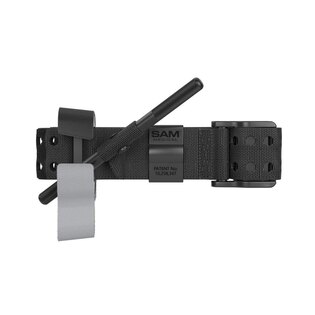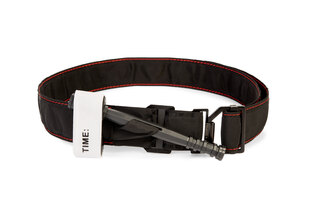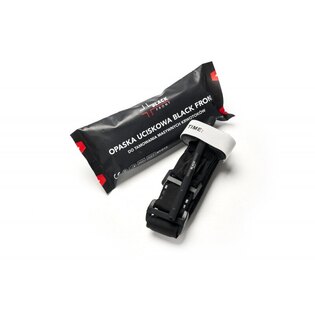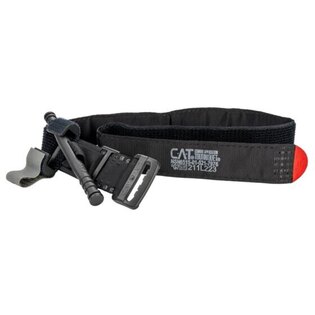Why is a classic car first aid kit not enough and what to do about it?
On the road, it can happen at any time and to anyone. You will stop at a car accident with injured people and provide first aid. Or you even participate in an accident yourself and save your loved ones. But can you really rely on an ordinary car first aid kit from a gas station that you carry with you in your car? And what should you do to have a first aid kit in your car that you can rely on in life-threatening situations?
Car first aid kit according to the decree
You can get a fully equipped car first aid kit for a few hundred practically anywhere – at a gas station, pharmacy, mall and on the Internet. Its content is in the Czech legislation defined by the Decree No. 206/2018 Coll. of the Ministry of Transport. The car first aid kit exists in three sizes, while passenger cars are sized I (the individual sizes differ in the number of pieces of medical equipment).
The first aid kit for a passenger car contains:
- Ready-made bandage with 1 pad (3 pcs)
- Ready-made bandage with 2 pads (3 pcs)
- Spool of smooth patch (1 pc)
- Choking bandage (1 pc.)
- Rubber (latex) gloves (1 pc.)
- Scissors (1 pc)
- Isothermal foil (1 pc.)
The bandages, coil with a patch and choking bandage must meet the parameters set by the decree, but we will not describe them in detail in this article.
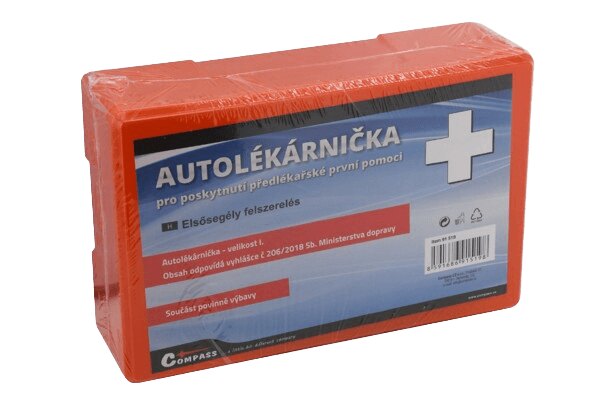
A classic car first aid kit, which you can usually find in a store.
What is the problem?
The problem with most of the cheap and widely available car first aid kits is not their content, but poor quality. For a large number of manufacturers, the quality of the first aid kit is not a priority, as it is mainly about its price on the market. And in order to keep the price as low as possible, the first-aid kit itself and its contents are usually made of too cheap and cheated material.
Such a car first aid kit will pass a police check without any problems and – as they say – "the paper will be satisfied", but in a real situation it will probably be of no use to you, and may even complicate the provision of first aid. In short, you won't treat anyone properly with such a first aid kit.
Don't underestimate the risks
It is possible to argue that paramedics with professional equipment will be on the scene within a few minutes (but this may not always be true) and by then it will be "managed". Or even worse – that you don't know how to give first aid, so you'd rather do nothing, because it's said that those who do nothing won't spoil anything.
But it can happen that it will be a matter of seconds. And that at any given moment you will have to rely on yourself. It could be your life or the life of your loved ones. At times like these, you cannot afford to let human life depend on low-quality substitutes from China, and referring to the decree will not restore anyone's health either. Investing in a good first aid course and basic medical equipment doesn't have to cost a fortune, but it can be one of the best investments of your life.
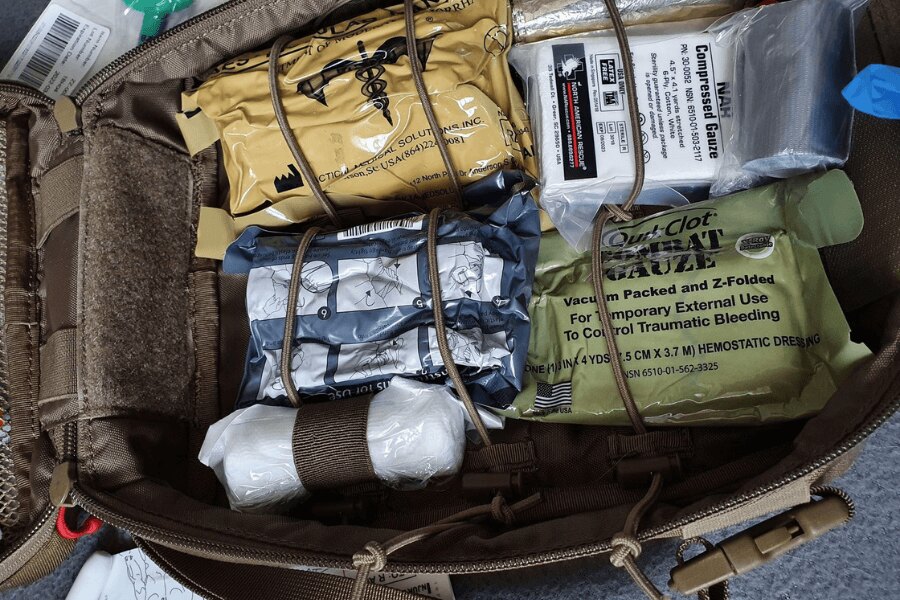
Equip yourself with quality medical supplies. Don't rely on cheap substitutes.
The most common shortcomings of ordinary car first aid kits
- Flimsy packaging. Cloth covers made of cheap synthetic materials are prone to tearing, poor quality and inconspicuous (try to feel it with a trembling hand) zipper can break or jam when you absolutely need it to work. Packaging made of thin plastic, on the other hand, has a tendency to crack – you accidentally kneel on the first aid kit while treating someone and you cut your knee.
- No division of the interior space. Thanks to the complete absence of internal pockets or organizers, all the material in the car first aid kit is just casually tossed around. When providing first aid, you will then have to dump the entire contents of the first aid kit on the ground and search.
- Everything is sealed in foil. And so that the contents of the car first aid kit do not look so cluttered at first glance, everything is usually still sealed in protective foil. You do not have the opportunity to familiarize yourself with the material in advance, and in the event of an accident you will only have to empty it out of the bag.
- Unclear instructions. Most car first aid kits contain some sort of leaflet with instructions for providing first aid. No one will likely study it until they need it. In a stressful situation, however, instructions with fine print will not help you – even if you are able to read at all, the brain will have a huge problem processing this information and converting it into reality. When it comes to instructions, only super clear, with large pictures and sealed in foil!
- Few pieces of material.
- A weak tourniquet (choking bandage).
- Poor quality bandages. Even if the bandages in car first aid kits meet the parameters given by the decree, in reality they tend to be too weak, thin, insufficiently absorbent and tear easily. The covering and absorbent surface are too small and will not cover more extensive injuries. In bandages with 2 pads, the second pad often cannot be moved, sometimes it is difficult to find it at all. Such bandages are not suitable for stopping massive bleeding or as pressure bandages.
- Adhesive tape that is too thin and won't stick.
- Scissors that don't cut. You can cut a thin bandage with ordinary scissors, which are usually included in car first aid kits, but they cannot deal with clothes – especially jackets, jeans, seams – and seat belts.
- A single pair of gloves in an unknown size. Gloves protect you from dangerous infection. At the same time, they can easily tear (even when putting on) or pierce. In addition, there may be more people helping you on site and everyone has to protect themselves. One pair of gloves is not enough even for one person. The gloves in the car first aid kit will most likely be made of cheap material again, and you will be praying at the last moment that the unknown (Chinese) size fits you at least a little.
- Lots of packaging and trash. Sterile material must be well wrapped, there is no discussion about it. But when you start unpacking and using things from a classic car first aid kit, you will find that they are literally packed in a ton of plastic and all of this is sealed in foil just to be sure. In no time, you will have piles of plastic bags and sacks lying around. This mess will bother you and complicate your work.
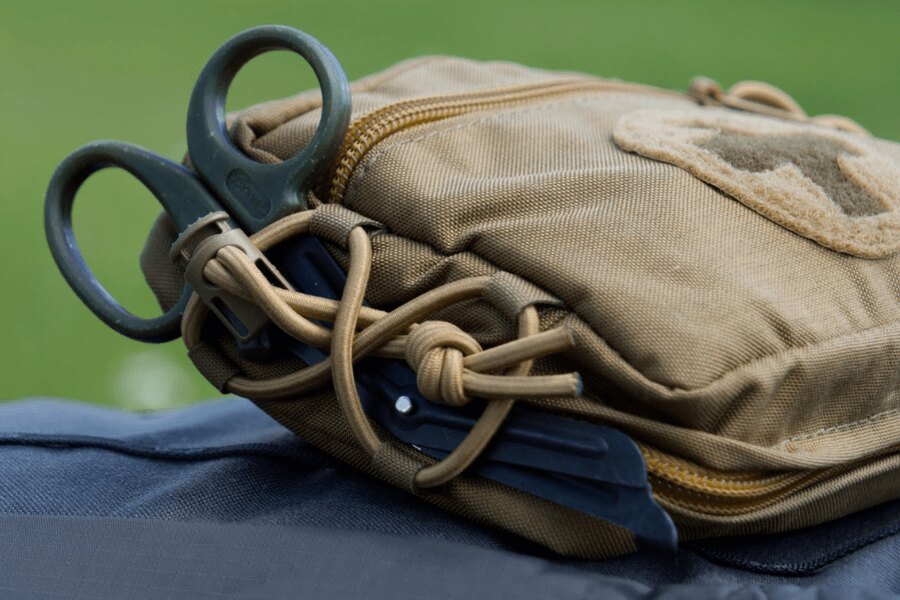
Rescue scissors must be robust and strong, able to cut clothing.
What can I do better?
A good car first aid kit must fulfill two main things:
- You have to be able to rely on it.
- You have to be able to handle it.
Although medical procedures and equipment are constantly evolving and updating, we will not encourage you to purchase specialized or professional medical equipment at this time if you are not "in the blood" to use it.
In a crisis situation, you won't have the opportunity or capacity to read instructions and think about using something you don't know. Therefore, it is better to buy basic material for the car first aid kit, but in a high-quality design. Remember that the main thing is to be able to handle what you have well.
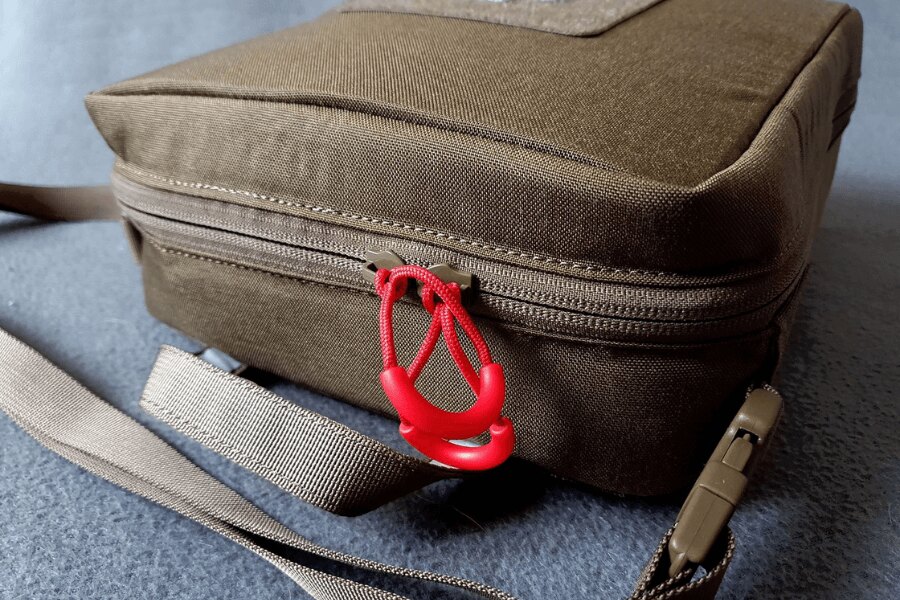
The first aid kit zipper must work 100% and withstand rough handling or tearing. Therefore, choose high-quality YKK zippers. Large and highlighted fingerboards are a plus, easy to find.
What should a car first aid kit look like?
First, let's focus on the first aid kit itself. What is important when choosing:
- Durable material and quality workmanship. Materials such as Cordura, unlike the cheapest synthetic fabrics, have an incomparably higher mechanical resistance and will reliably protect your material.
- Compact shape. The dimensions and shape should correspond to the place in the car where you will transport the car first aid kit (e.g. under the seat). The first aid kit can also have straps for carrying or hanging, but these must not get caught or obstruct anywhere. They can also be removable.
- Immediate and complete access to the first aid kit. You need to be able to quickly and completely open the first aid kit so that you have free access to all the material. Opening must be as simple and efficient as possible, nothing must get stuck anywhere. The medicine cabinet must not open by itself. Related to this is the following point…
- Quality YKK zipper. This zipper is sturdy and works reliably. Another advantage is the enlarged fingerboard, which you can easily feel and grip firmly. Secure the zippers with visible (e.g. red) paracord.
- Clear internal layout. It is enough for the first aid kit to have flaps with transparent pockets and you will immediately know where to reach. A higher (and much clearer) class are then tactical first aid kits with velcro inserts, mesh pockets, loops and shock cords, etc.
I have the first aid kit, what can I add to it?
The basic and most important equipment remains the material that corresponds to the decree, but in good quality and in a larger number of pieces.
Basic equipment:
- At least 3 pairs of gloves in the appropriate size (you can have more sizes, e.g. for the passenger). The most suitable gloves are nitrile, which are anti-allergenic.
- A proper band with the appropriate width that sticks well.
- Quality rescue scissors that also cut clothing and safety belts.
- High-quality bandages: compression and rolled, covering squares, etc.
- Wide tourniquet, tourniquet, SWAT-T tourniquet.
- Isothermal film in several pieces – it is easy to tear and it is better to use two to effectively wrap one wounded person. Don't be afraid to invest in a more durable piece here.
What else can you add:
- A burn blanket.
- Alcohol marker.
- Splint (e.g. SAM splint).
- Three-pronged cloth scarf.
- A supply of plasters.
- Medicines that you or your regular passengers take.
- Rescue knife or multitool.
- Duct tape.
- Headlamp + flashlights.
- Additional material at your discretion and experience.
Some final advice
1) Learn first aid
You rarely learn first aid really well at a driving school. Most of the time, you will limit yourself to a few basic lessons, which will come together over time, and a few trial jumps on a training dummy. However, in order to really get the procedures into your blood, you need to try them yourself and automate them, mere theory is not enough. Look for a quality and, above all, experiential first aid course. It's an investment that could one day be priceless.
2) Don't rely on others
Become the person you can count on. Do not rely on the ambulance to reach you in time, and certainly not on the people around you. You might get lucky with someone who knows what they're doing and who you can work well with. But the more likely option is that the people around you will be confused, freeze or start "helping" with useless advice.
3) Educate yourself
Medical procedures and equipment are constantly being updated and made more efficient, we are always getting new information and have the opportunity to learn new things. Some procedures and lessons that were the rule a few years ago can already be refuted long ago and replaced by something more effective. So keep up with the times. We've never had better access to information than we do today.
4) Location of the first aid kit
A first aid kit, thrown somewhere at the bottom of the trunk and covered all around by heavy luggage, will be of no use to you. Especially when someone bumps into you from behind. Therefore, place it so that it is in a safe place and at the same time easily accessible. For example, under the seat or in one of the compartments in the car.
5) The first aid kit doesn't have to be just one
You can solve this by having one "classic" car first aid kit exactly according to the decree in case of a police check and one "proper" one that can be used in an emergency. Your passenger can also carry their own first aid kit in the car.
Readers are further interested



























































































































